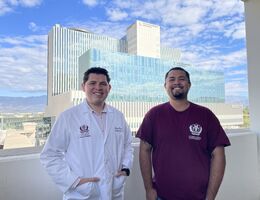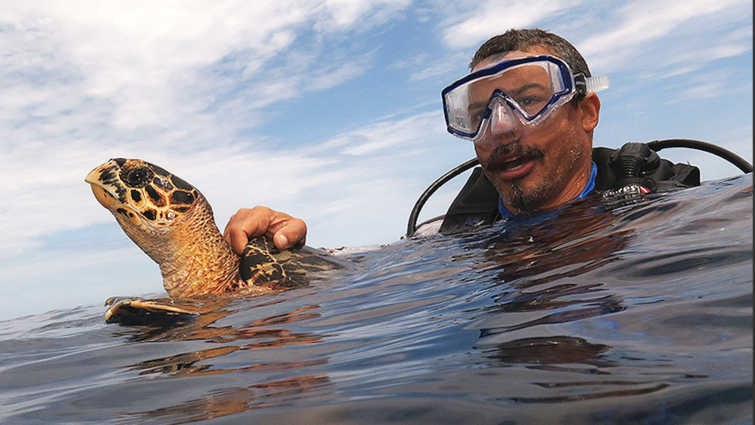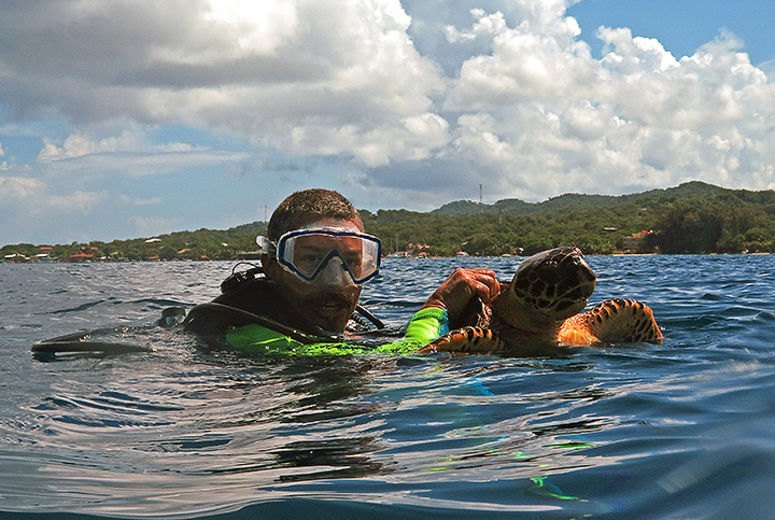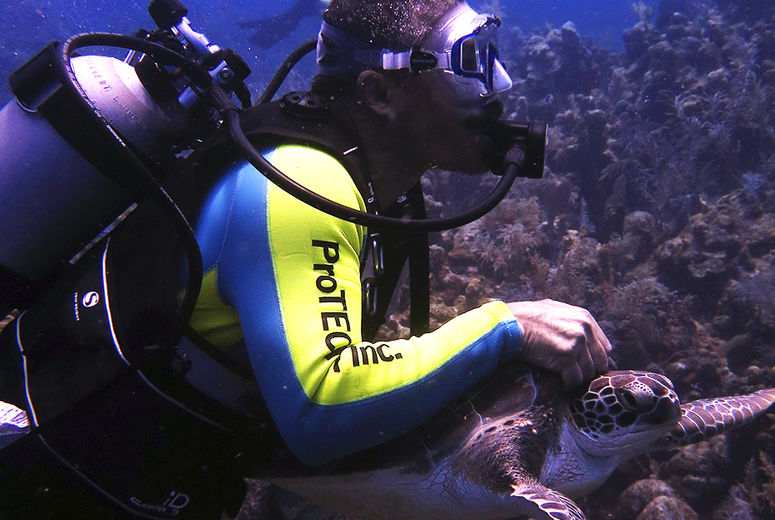

Dr. Dunbar is known to swim with sea turtles as part of his research
Stephen Dunbar, PhD, a professor of biology and director of the Marine Research Group at Loma Linda University, has been selected to serve as the next president of the International Sea Turtle Society — a recognition of his leadership and contributions to worldwide sea turtle research and conservation efforts over nearly two decades.
Dunbar will become head of the Washington, D.C.-based international non-profit organization later this month and work to promote the group’s efforts in regions that have had less representation in the past, including Southeast Asia. He is known for applying digital image-recognition technology to sea turtles and promoting conservation goals in Central America, the Caribbean, and Asia.
“I’m humbled and honored to have the support of the global sea turtle community, and that this amazing group of dedicated researchers, communities, students, and government agencies have entrusted me with the privilege of preparing for the 2024 symposium and representing our Society around the world,” Dunbar said.
Already an expert in invertebrate marine animals, a chance discussion during a consulting project in Honduras in 2006 led to Dunbar developing his interest in protecting sea turtles. Though his expertise was in lobsters and crabs, he was able to help the Central American nation develop a national database for tracking and conservation methodologies. He founded the Protective Turtle Ecology Center for Training, Outreach and Research, Inc. (ProTECTOR, Inc.) as a California-based non-profit to protect sea turtles in Honduras.
He has since become a leader in sea turtle research, particularly their habitats and populations. He describes sea turtles as “ecosystem engineers” of reefs and seagrass beds. Hawksbill sea turtles, for example, mostly eat sea sponges, which can take over a reef area. Turtles keep the sponge masses in check. This also helps the nearly 20 species of fish that eat sponges but can’t break through the outer layer without a turtle having already done so. Dunbar says green sea turtles help seagrass beds remain healthy — the turtles eat their new growth, much like mowing a lawn to keep it fresh.
Dunbar holds a PhD in applied sciences in the area of tropical marine biology from Central Queensland University and has taught at Loma Linda University since 2002. He frequently reviews manuscripts for journal articles on digital image-recognition technology for other animals, including crabs and snakes.
“Dr. Dunbar’s expertise and dedication to the study and conservation of sea turtles are unmatched, and we are proud to have him as a member of our faculty,” said Ronald Carter, PhD, provost of Loma Linda University. “We look forward to seeing the impact of his work in this new role and the ways in which it will benefit sea turtles and their habitats around the world.”
The ISTS was officially founded in 1996, having grown out of a 1981 gathering of biologists, conservationists, educators, and advocates. Today, that annual meeting is now a symposium that draws more than 1,000 attendees from 80 countries.




